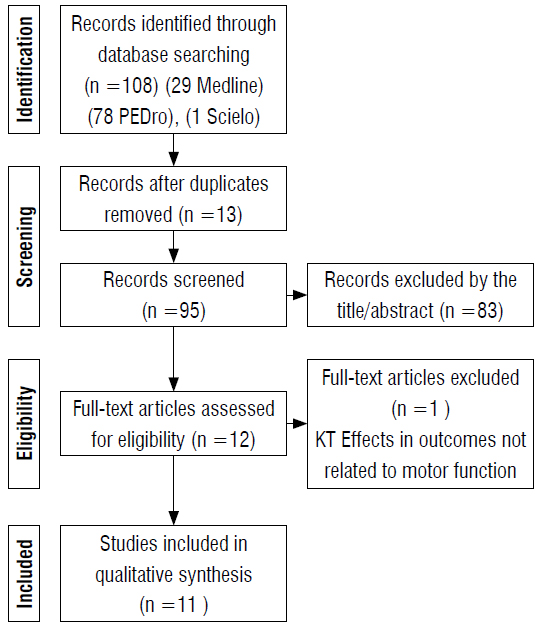Abstract
Introduction:
Cerebral Palsy is a group of non-progressive movement and posture disorders. There are many rehabilitation methods for children and adolescents with these disorders. Kinesiology Taping(KT) is becoming a popular as an option of rehabilitation method for these children.
Objective:
The aim of this systematic review is to summarize evidence regarding the methods of Kinesiology Taping use in children and adolescents with Cerebral Palsy and its effects.
Materials:
A search of scientific papers in the databases Medline, Scielo and PEDro was conducted with no data or language restriction. For this search the keywords “Kinesio taping”, “Kinesiology Taping”, “Taping”, and “Bandages” combined with “Cerebral Palsy” were used. The search was conducted between May of 2015 and November of 2016.
Results:
Eleven studies were included in the review, six were randomized controlled clinical trials, four were quasi-experimental studies, and one was a case study. In general, the studies followed the guidelines proposed by the Kinesiology Taping creator; they used corrective techniques and muscle contraction facilitation/inhibition techniques. Results varied according to techniques used and outcomes chosen.
Conclusion:
There is strong to insufficient evidence of KT effects in motor function related outcomes. Stronger quality level studies are necessary to support use of KT in clinical practice.
Keywords:
Cerebral Palsy; Bandages; Motor Activity; Rehabilitation

